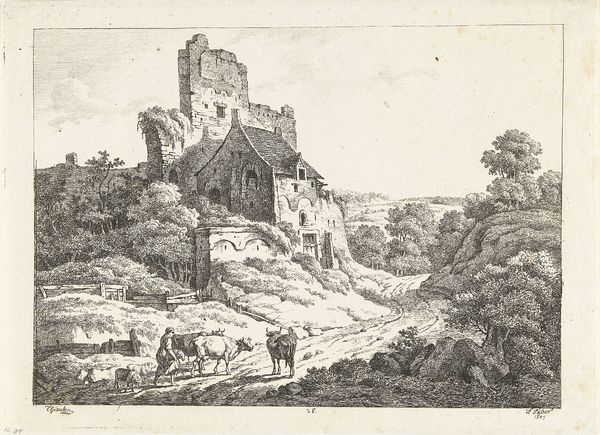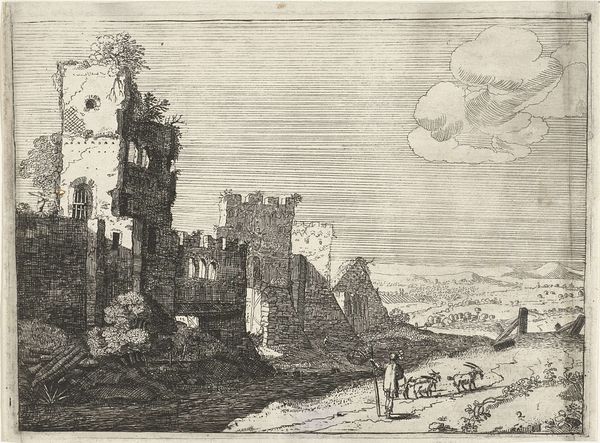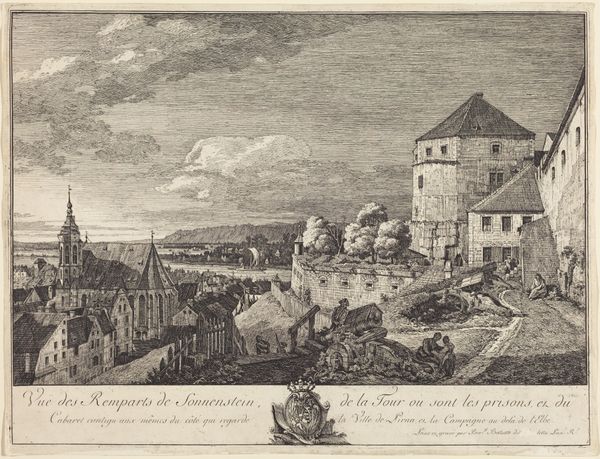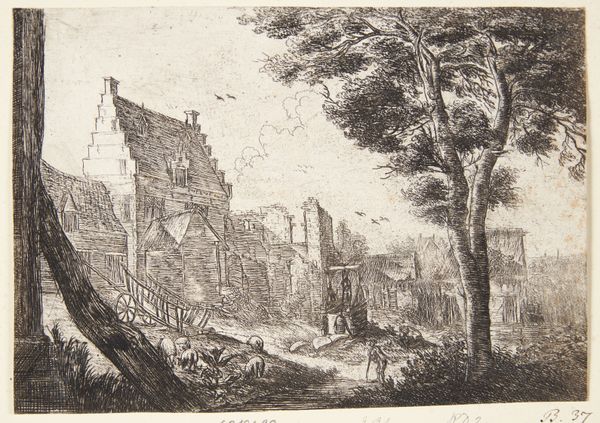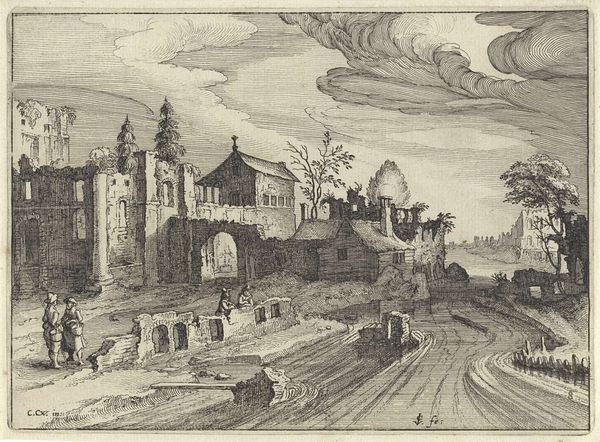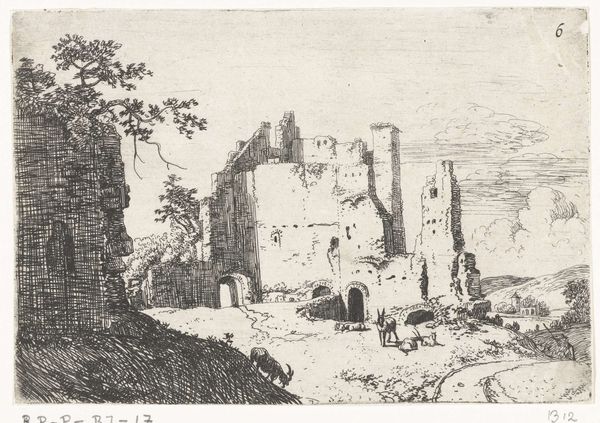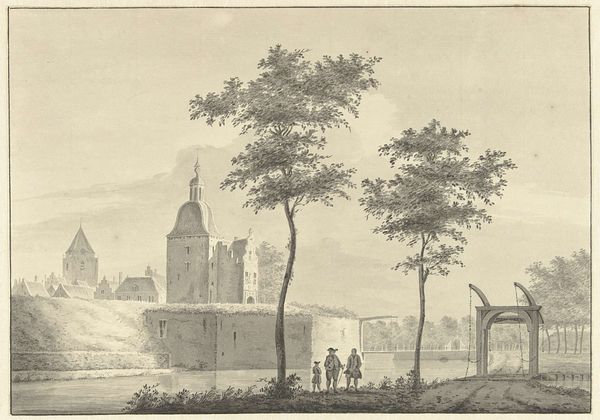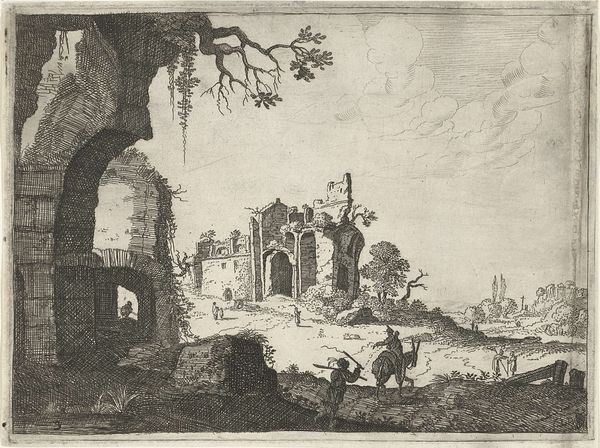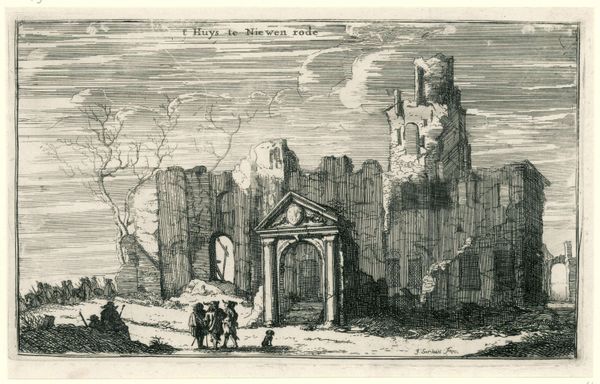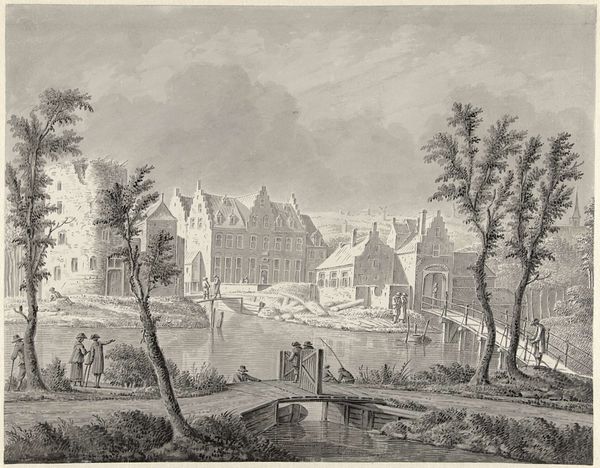
drawing, lithograph, print, paper
#
drawing
#
lithograph
# print
#
landscape
#
paper
#
romanticism
#
history-painting
Dimensions: 271 × 323 mm (image); 402 × 578 mm (sheet)
Copyright: Public Domain
Curator: We're looking at "Church at Kobern on the Mosel," a lithograph by Domenico Quaglio, dating from 1823. It resides here at the Art Institute of Chicago. Editor: My first impression is one of profound contrasts, actually. The solid permanence of the church versus the crumbling, skeletal ruin looming above, and the overall sense of meticulous detail is striking in its play with light and shadow. Curator: Indeed. This image speaks to the 19th-century Romantic obsession with history and its visual representation of power. We see a church, a vital social institution, juxtaposed against a ruined castle that likely represents a defunct political order. Editor: Yes, the church almost seems idealized and pristine in the face of that decaying castle. The composition guides us to the details, a strong use of line directing our gaze between the symbols of social and political structures. I see also the soft graduation of values creating aerial perspective... Curator: I would say it also captures the tension between the sacred and secular, all within a rapidly changing socio-political context, typical for its time. Images like this served as visual records and, more importantly, social commentary, reaffirming certain value systems during social transformation. Editor: Definitely, and from a purely aesthetic perspective, note how the artist has expertly controlled light to create mood and contrast. That precise delineation defines the overall tonality within the landscape. The linear emphasis almost overwhelms the potential for volumetric rendering. Curator: Right. Beyond that, Quaglio was making a clear statement, embracing medievalism as a rejection of Neoclassical order and the chaos that had consumed revolutionary France. The artwork visually narrates ongoing debates about Europe's cultural and political future. Editor: Ultimately, for me it is a balanced visual conversation, one structured between light and dark, mass and line. Each element interacts structurally with the other, thus establishing compositional unity. Curator: For me, this piece highlights how artwork is never divorced from its moment. It reveals societal tensions encoded within its detailed lines, prompting critical thought. Editor: And the more we look, the more the formal elegance enhances our ability to read, appreciate, and interpret this captured moment.
Comments
No comments
Be the first to comment and join the conversation on the ultimate creative platform.

